Top Photo: Snowberry clearwing hovers at butterfly bush flower spike in Butterfly House Outdoor Garden.
Snowberry clearwing moths are a type of strong flying sphinx moth commonly seen hovering at flowers to sip nectar. They’re diurnal moths and resemble small hummingbirds or bees as they visit the flowers seeking nourishment. They are responsible for pollinating a large number of flowers, especially deep tubular flowers through the action of their long, sturdy, probing proboscis and hairy body which transfers pollen from flower to flower.
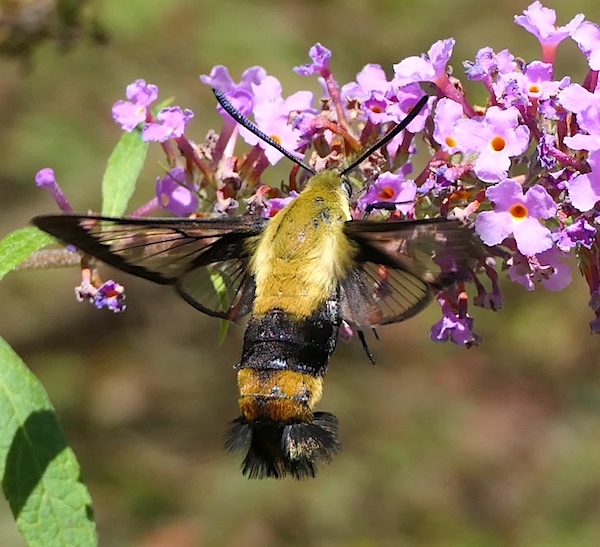
Beautyberry is a favorite of the local mockingbirds which have been feasting on the berries since the purple fruit ripened.

Oh yeah, and beautyberry is edible. Most folks make it into a jam.
A young copperhead was spotted crossing the path. This little pit viper, about 10” long, still has its bright yellow juvenile tail markings.
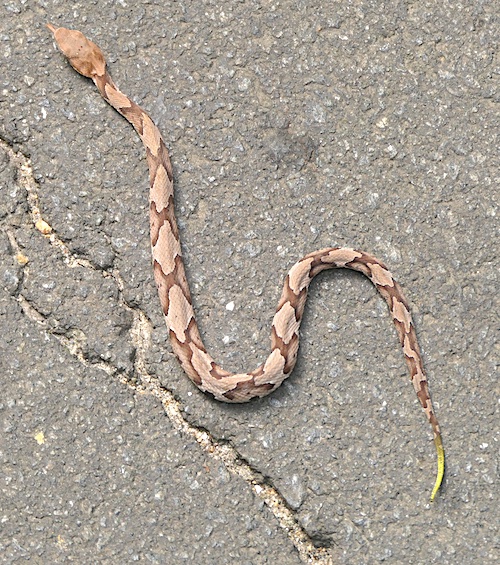

Fiery skippers are a common sight this time of year. They can be identified by the small black dots on the undersides of their hindwing. The dots are not always apparent, but sit tight, the insects move around a bit, eventually revealing their underwing for the viewer to see.
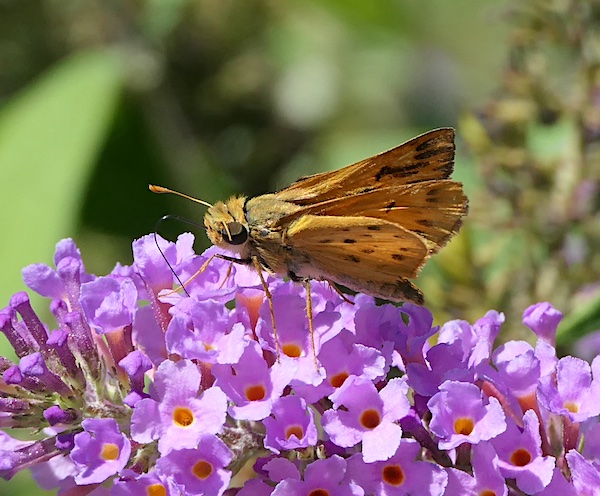
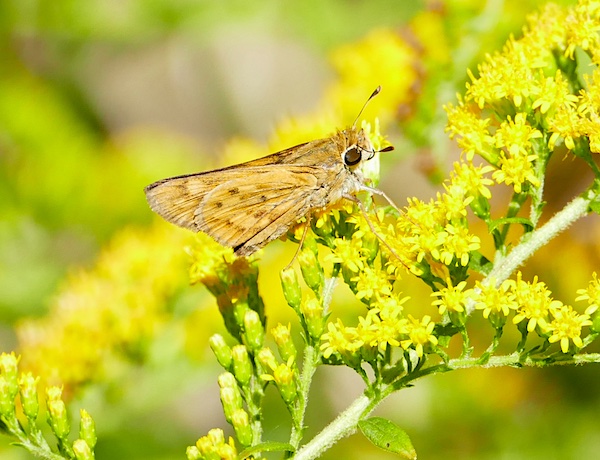
Milkweed attracts many kinds of insects. Most are brightly colored to warn predators they have become toxic due to their consumption of the milkweed plant. Here I found two look-a-like milkweed bugs exploring two adjacent common milkweed plants in the Butterfly House Garden, large and small milkweed bugs.
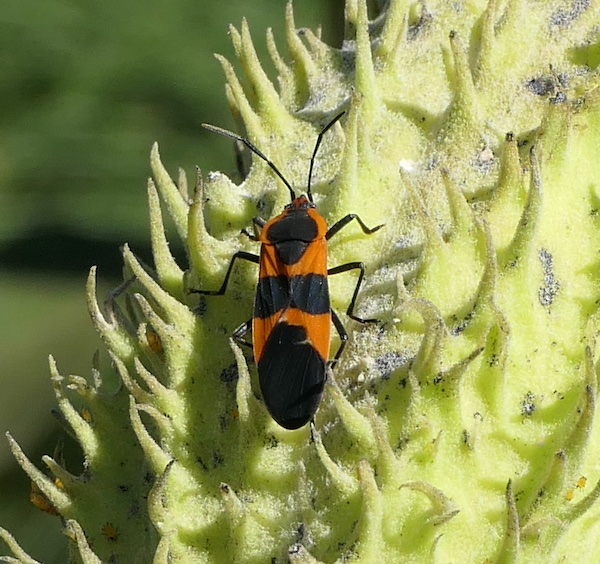
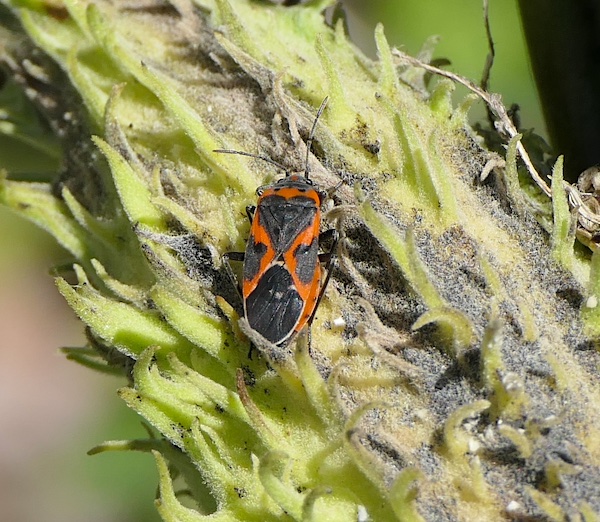
While walking on the floating walkway in the wetlands I came upon a small pile of aquatic invertebrate parts. A red-shouldered hawk, barred owl, or perhaps a heron deposited the remnants on the walkway’s railing. After consuming a red swamp crawfish and not being able to digest the hard parts of the creature, like the shell, including claws and legs, the bird coughed it up in the form of a pellet onto the railing for me to find.
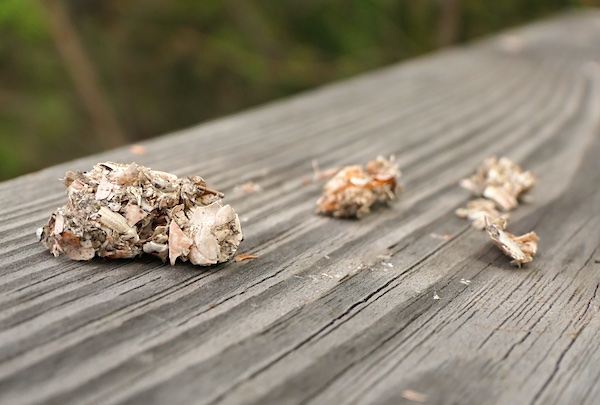
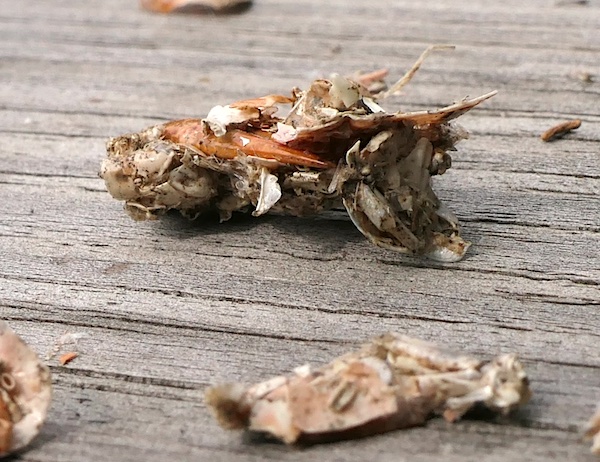
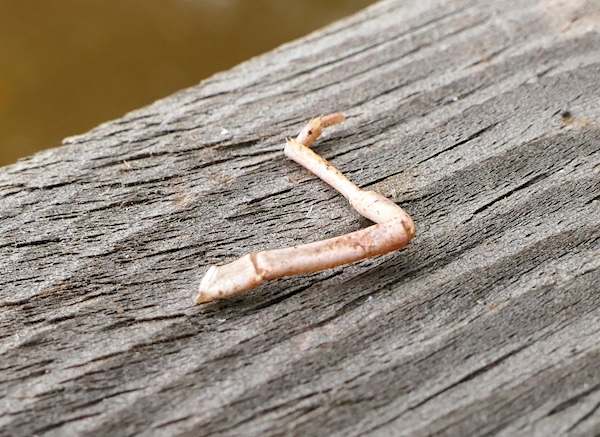
A large mostly black swallowtail butterfly, pipeline swallowtails like the milkweed bugs above, are toxic. Most birds do not attempt to catch the swallowtail more than once. It gets its toxicity from the pipevine the caterpillars eat during their larval stage.
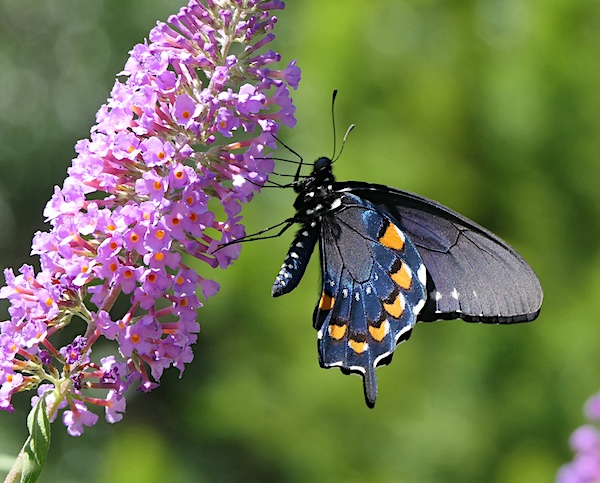
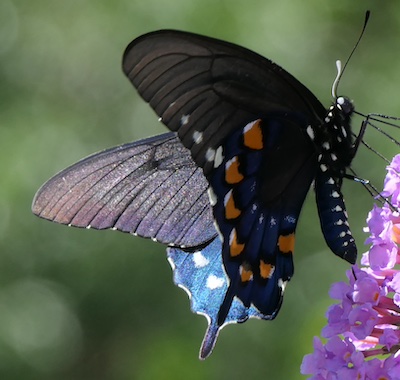
Perhaps displaying Batesian mimicry, the red spotted purple butterfly wears similar colors. Otherwise, the butterfly is named for its purple scales on the upper side of its wings, and the reddish spots below. Note there are no “tails” on the wings. It’s not a swallowtail and is more closely related to the white admiral and viceroy butterflies.
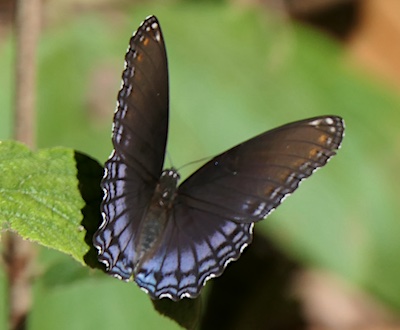

The very common and flashy silver-spotted skipper. These skippers are large and always on the move, so if you don’t see its namesake white splotch on the underside of its hindwing right away, you will eventually.
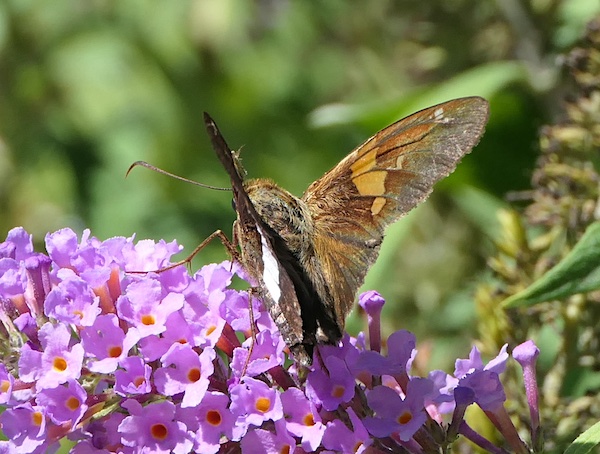
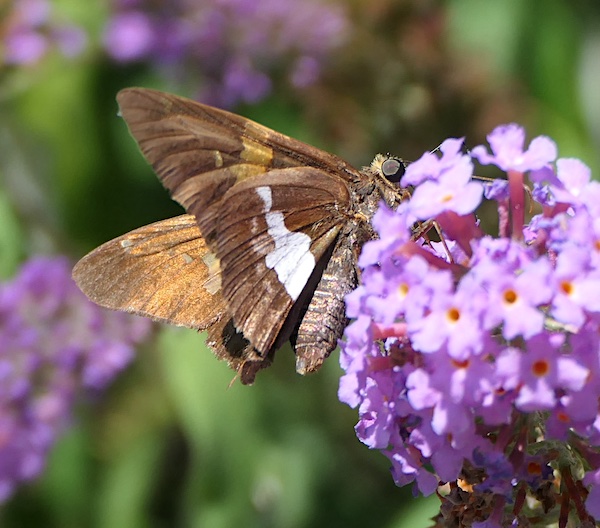
And finally, many late summer and fall blooming flowers are yellow. These sunflowers are a good example.
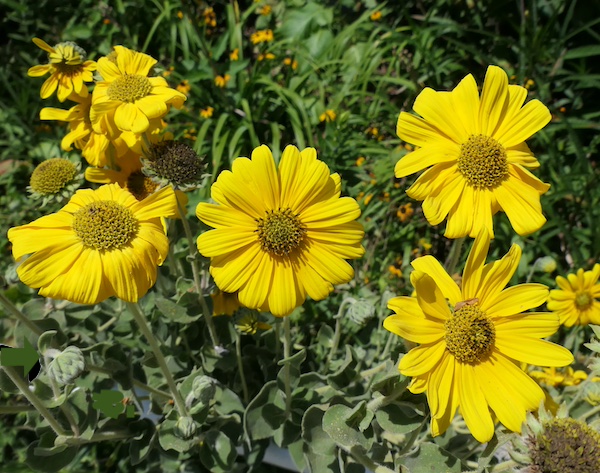
Enjoy the fall weather.
Ranger Greg